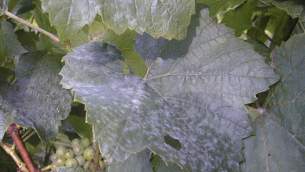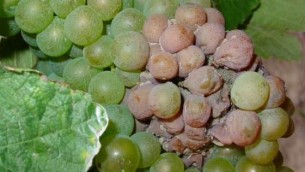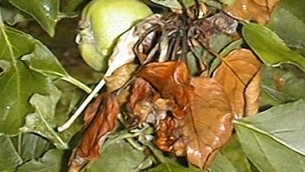Sour Rot
Sour rot is a late season disease of grape bunches that causes a soft watery rot that has a distinct vinegar odour. Berries change colour and infection can quickly spread through bunches. Sour
rot is caused by a complex of undesirable yeasts and bacteria and is often associated with botrytis infections. Sour rot gains entry through wounds from birds, berry splitting etc.

Related Pests

Powdery mildew - Grapes
Erysiphe necator
Powdery mildew (Erysiphe necator) is a widespread and common disease of grapes in New Zealand. Obvious as white spots which can spread across leaves producing a grey-white sporulation.
Bunches are also infected with the characteristic grey-white sporulation symptoms. Winemakers detest powdery mildew as even minor infection of grapes has a detrimental effect on subsequent wine quality.

Botrytis
Botrytis cinerea
Often called grey mould, Botrytis cinerea in wet seasons is responsible for the greatest crop losses in vineyards. Classically appears as bunch infections
of browning berries with grey sporulation. Late season berry slip skin is also caused by botrytis. Botrytis can also be an issue in other crops including citrus, kiwifruit, onions strawberries and berryfruits.

Fireblight
Erwinia amylovora
Fire blight is a devastating bacterial disease (Erwinia amylovora) of pears but can also attack apples. Symptoms of infection are well named with wilting foliage that has a black “burnt” look.
Typically seen on young, vigorous growth. Moisture and mild temperatures during the blossom period favour infection.



